The rise of kayaking: U.S. market & PNW highlights
The United States has seen a tremendous increase in the popularity of outdoor recreational activities in recent years, with kayaking emerging as a top choice among enthusiasts. The kayaking industry is booming (and so is artificial intelligence in the outdoor industry), but there’s also a rise in inexperienced kayakers who don’t follow critical paddling safety guidelines.
This blog post will delve into the following topics (and just click the topic if you want to jump ahead to that section of the article):
Just a heads-up, this post contains affiliate links that at no additional cost to you, we may earn a small commission.
Why kayaking is an ideal activity for adults
Several factors have contributed to the rapid growth of the kayaking industry, including health and fitness awareness, the eco-tourism boom, and technological advancements.
As more people prioritize their physical and mental well-being, kayaking offers a low-impact, full-body workout that is both enjoyable and engaging (this is one of the reasons we love to kayak).
And thanks to modern materials and designs, recreational kayaks are now more lightweight, durable, and easy to maneuver, making the sport more accessible to beginners.
Another cool thing about kayaking? When you’re using a motor-free boat, kayaking is an inherently eco-friendly activity, offering outdoor enthusiasts a low-impact way to explore waterways while leaving minimal traces on the environment.
The quiet, non-motorized nature of recreational kayaks allows paddlers to navigate through sensitive ecosystems without disturbing wildlife or causing harm to aquatic habitats.
This sustainable mode of exploration not only fosters a deeper appreciation for the natural world but also encourages responsible stewardship and conservation efforts in the Pacific Northwest.
By choosing motor-free kayaking as a form of recreation, individuals can directly support the preservation of the region's pristine lakes, rivers, and coastal areas, safeguarding these invaluable resources for future generations to enjoy and cherish, all while creating treasured memories and enjoying from the physical and mental benefits of paddling.
New to kayaking? Take ACA’s FREE online paddling safety course!
Key statistics: kayaking and paddling interest in the U.S.
The kayaking category – encompassing recreational kayaking, touring, and sea kayaking –represents a significant portion of the overall outdoor market. If you want to deep dive by U.S. region with continuously updated Google Trends data, check out our article on U.S. Kayaking Trends by Region.
The following key statistics shed light on the growing interest in recreational kayaking and paddling activities in the United States:
In 2021, the number of active kayakers in the U.S. reached approximately 11.4 million, with flatwater kayaking accounting for 71% of the total participation, according to Statista.
The Outdoor Foundation's 2021 Outdoor Participation Report states that kayaking is the fastest-growing water sport, with a 32% increase in participation over the past five years.
The same report indicates that among first-time participants in outdoor activities, 17% selected kayaking as their preferred activity.
In 2021, the U.S. kayak market generated around $646 million in sales revenue, with flatwater kayaks comprising over 62% of the total sales, as reported by Market Research Future.
A recent survey by the American Canoe Association found that the average kayaker in the United States spends $1,000 annually on equipment, accessories, and paddling-related travel (this statistic proves true to us personally).
According to a study by Arizton Advisory & Intelligence, the global canoeing and kayaking market is expected to grow at a compound annual growth rate of 4.41% between 2021 and 2026, illustrating the increasing interest in paddling sports worldwide.
The same Arizton study also estimates that North America accounts for more than 35% of the global canoeing and kayaking market share, making it the largest regional market for these water sports.
A report by Grand View Research suggests that the global kayak market size is projected to reach USD 1.63 billion by 2028, further demonstrating the industry's impressive growth.
The 2021 Outdoor Foundation's Outdoor Participation Report reveals that 40% of all paddling participants in the U.S. are female, showcasing that the gender gap has not changed in 8 years. (DYK? Our own company, Flatwater Kayak Club, was founded by a woman).
According to Statista, the number of kayak fishing participants in the United States increased from around 1.8 million in 2011 to approximately 3.3 million in 2021, highlighting the growing crossover between kayaking and other popular outdoor activities.
Important paddlecraft safety resources
Incredible stats, right? But one statistic that’s alarming is the rise of flatwater kayaking injuries and fatalities, oftentimes due to the lack of knowledge/skill and following critical safety protocol.
Here are some free resources to help build your education on proper paddling safety, and always wear your life jacket (we do!).
Water Sports Foundation articles & content on paddling safety
Paddling Magazine on the surge of water accidents
WSF videos on kayaking safety essentials
Article: everything you need to know about flat water kayaking
“Data tells us most accidents happen in flatwater due to falling overboard or capsizing. Untrained paddlers usually don’t know how to get back in once they’ve fallen out, aren’t wearing a life jacket and aren’t prepared for cold water exposure. It’s imperative that we help more paddlecraft purchasers take advantage of the many free and inexpensive safety education resources available to them.”
Emerging brands in the kayaking industry
As the recreational kayaking industry continues to grow around the nation and beyond, several innovative companies have emerged, capturing the attention of paddling enthusiasts.
These rising brands are making waves by offering unique and cutting-edge designs, materials, and features.
Check out the following list of up-and-coming brands in the flatwater kayaking space:
Known for: Foldable kayaks made from durable, lightweight materials
Read now: our Flatwater Kayak Club 2-year Oru kayak inlet in-depth review
Oru Lake vs Oru Inlet: which folding kayak is right for you?
Known for: Portable, high-performance kayaks with adjustable hull shapes
Known for: Modular, easy-to-assemble kayaks with a nesting design
Known for: Lightweight, inflatable packrafts suitable for flatwater kayaking and backpacking adventures
Known for: Innovative paddleboards that can be converted into kayaks for versatile flatwater adventures
By following these rapidly-growing popular brands via their websites and social media channels, you'll get access to the latest innovations in the flatwater kayaking industry and see who’s pushing the boundaries of what's possible in this exciting realm of outdoor recreation.
“A record 37.9 million participants engaged in paddlesports like kayaking, canoeing and stand-up paddleboarding during the pandemic according to the latest data (2020) from the Outdoor Foundation.”
The newly-renovated Owen Beach in Washington is a great spot to rent a kayak with a view of Mt. Rainier on a clear day in the PNW.
Why flatwater kayaking is a great activity in the PNW
The Pacific Northwest, with its picturesque landscapes and diverse waterways, is a haven for flat water kayakers who know where to paddle
The region boasts countless recreational kayaking opportunities, from tranquil lakes and meandering rivers to expansive bays and sheltered coves. Kayakers can immerse themselves in the region's natural beauty, encountering lush forests, towering mountains, and an abundance of wildlife. It’s one of the best parts about living in this spectacular region of the United States!
A few iconic flatwater kayaking destinations in the Pacific Northwest, as reviewed on Flatwater Kayak Club, include:
Scappoose Bay, Oregon: This serene bay offers calm waters and abundant wildlife, perfect for kayakers of all skill levels.
Paulina Lake, Oregon: Nestled within the Newberry National Volcanic Monument, this picturesque lake is surrounded by dense forests and striking volcanic formations.
Willamette River, Oregon: This 187-mile long river offers diverse paddling experiences, with urban stretches in Portland and peaceful rural sections further south.
Pacific Northwest outdoor industry statistics
According to the Outdoor Industry Association's (OIA) 2019 Outdoor Recreation Economy report, outdoor recreation generates $16.3 billion in consumer spending, 172,000 direct jobs, and $1.4 billion in state and local tax revenue in Oregon.
In Washington, the same OIA report indicates that outdoor recreation contributes to $26.2 billion in consumer spending, 264,000 direct jobs, and $2.3 billion in state and local tax revenue.
For Idaho, the OIA report reveals that outdoor recreation generates $7.8 billion in consumer spending, 78,000 direct jobs, and $448 million in state and local tax revenue.
According to the U.S. Fish and Wildlife Service's 2016 National Survey of Fishing, Hunting, and Wildlife-Associated Recreation, 29% of Washington's residents participated in wildlife-watching activities, which often include paddling activities like kayaking.
The same survey showed that 31% of Oregon's residents and 39% of Idaho's residents participated in wildlife-watching activities, suggesting a potential overlap with kayaking and other paddling sports.
Common questions and answers for beginners
Embarking on a flatwater kayaking journey can be both exciting and overwhelming for beginners. To help support you, we've compiled a list of common questions and their answers to provide guidance for those new to this rewarding activity, with links to our articles that go more in-depth into these topics…
What type of kayak is best for beginners?
A recreational kayak is typically the best choice for beginners, as they are stable, easy to maneuver, and designed for calm waters. Look for a kayak with a wide, stable hull and comfortable seating.
What essential gear do I need to start kayaking?
Essential gear for kayaking includes a kayak, paddle, personal flotation device (PFD), whistle, and proper clothing for the weather conditions. Additional items such as a bilge pump, dry bags, and a paddle leash can also be useful.
How do I choose the right paddle?
The correct paddle size depends on your height, the width of your kayak, and your paddling style. A general rule is to choose a paddle that reaches your wrist when you stand it up vertically and extend your arm overhead.
What basic paddling techniques should I learn?
Focus on mastering the forward stroke, reverse stroke, and sweep stroke. These paddling strokes will help you move forward, backward, and turn your kayak effectively. Additionally, learn the low brace technique for added stability.
How can I stay safe while kayaking?
ALWAYS wear a PFD, check the weather forecast before heading out, prepare for submersion in the water and dress appropriately inform someone of your plans, and carry essential kayak safety gear, such as a whistle, bilge pump, and paddle float. It's also a good idea to take a beginner kayaking course or join a local paddling group to gain experience and knowledge! Again, we highly recommend taking this online, free course on paddlecraft safety with ACA.
Summary
The continued growth of the U.S. kayaking industry is a testament to the allure of flatwater kayaking and paddling as an accessible and enjoyable outdoor activity.
With numerous physical, mental, and environmental benefits, kayaking has captured the hearts of countless Americans. The Pacific Northwest, in particular, offers a unique and captivating setting for flatwater enthusiasts to connect with nature and experience tranquility on the water.
If you're eager to embark on your own kayaking journey, there's never been a better time to dive into this fulfilling pursuit… we’re glad we did, and we love connecting with our community of paddlers.
To get started, visit Flatwater Kayak Club's website for free resources and insights into the world of flatwater kayaking, and let the adventure begin!
RELATED READING: I walked over 400 miles in 12 weeks to prepare my cardio health for kayaking season.
About Flatwater Kayak Club
We set ourselves apart as the leading woman-owned, free, online kayaking resource, thanks to our conservation-forward content and meticulously human-reviewed paddling experiences.
By offering valuable, credible, and responsible information, Flatwater Kayak Club aims to help beginner and intermediate paddlers in the Pacific Northwest safely navigate waterways and contribute to a sustainable future for the global kayaking community.
You’re here, you’re in. The water awaits.

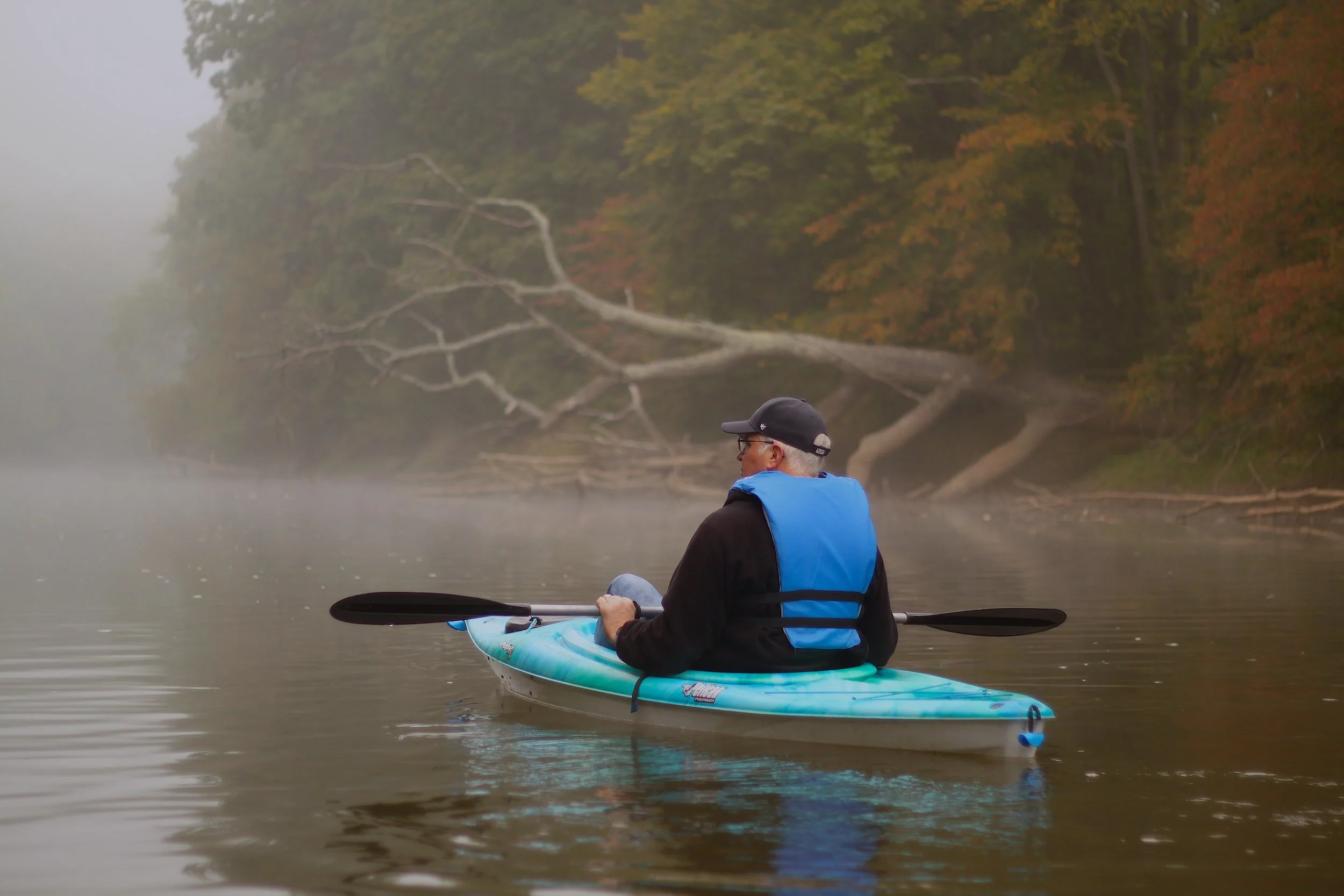
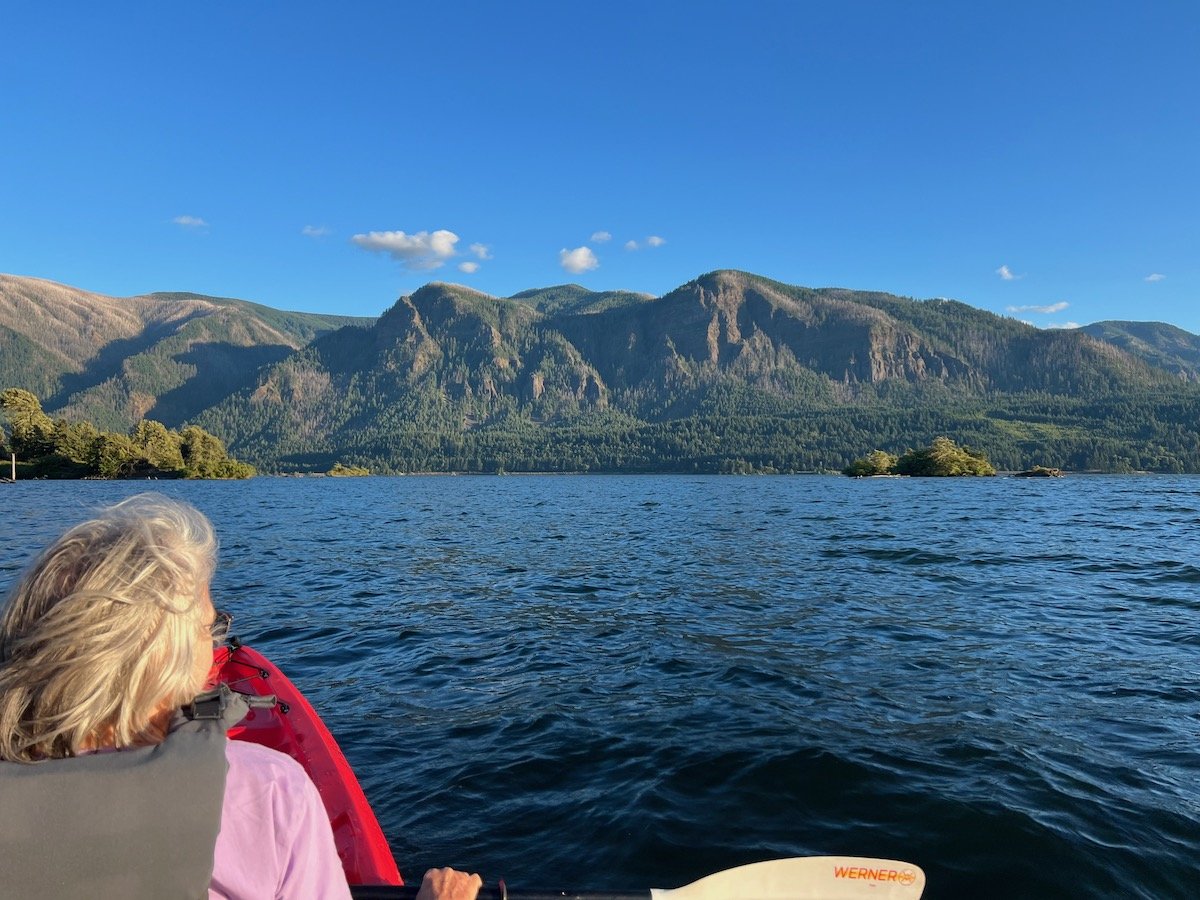
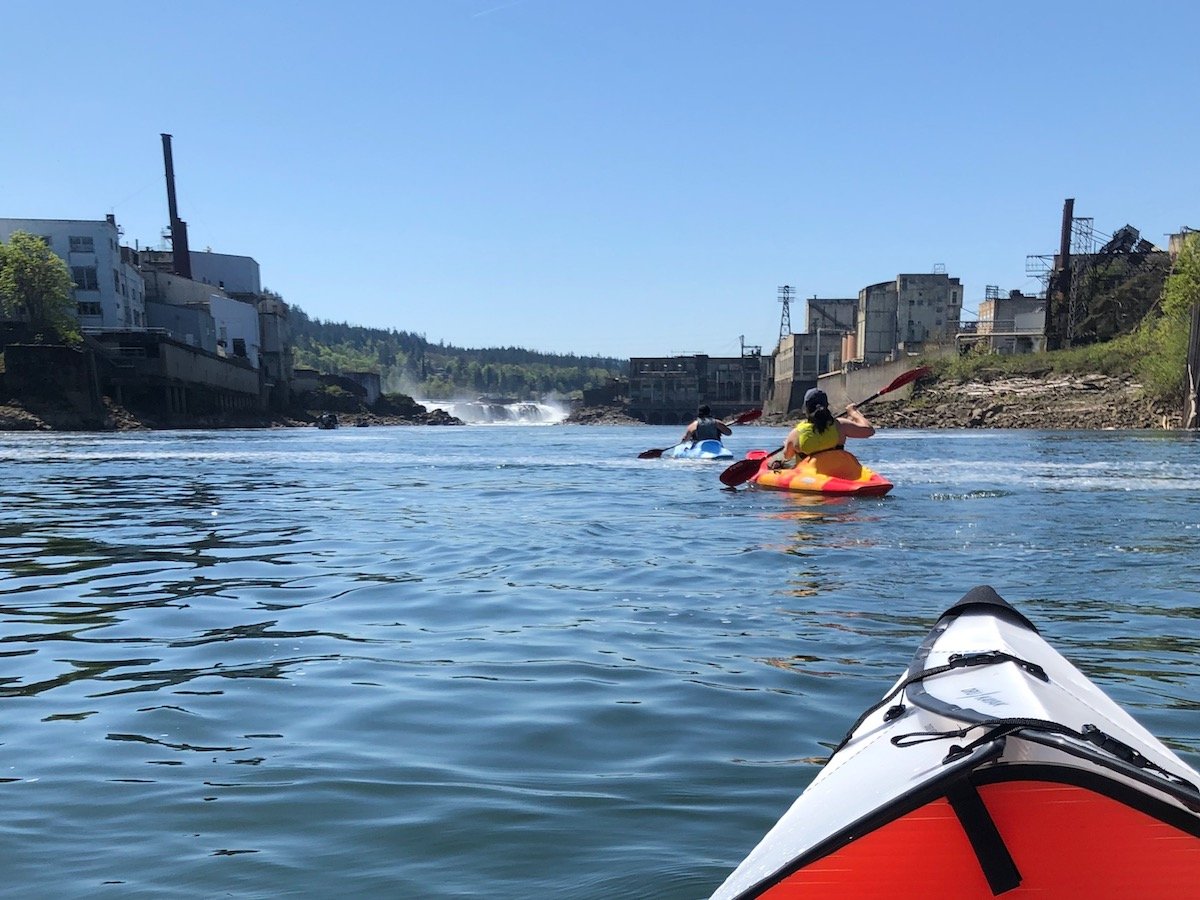


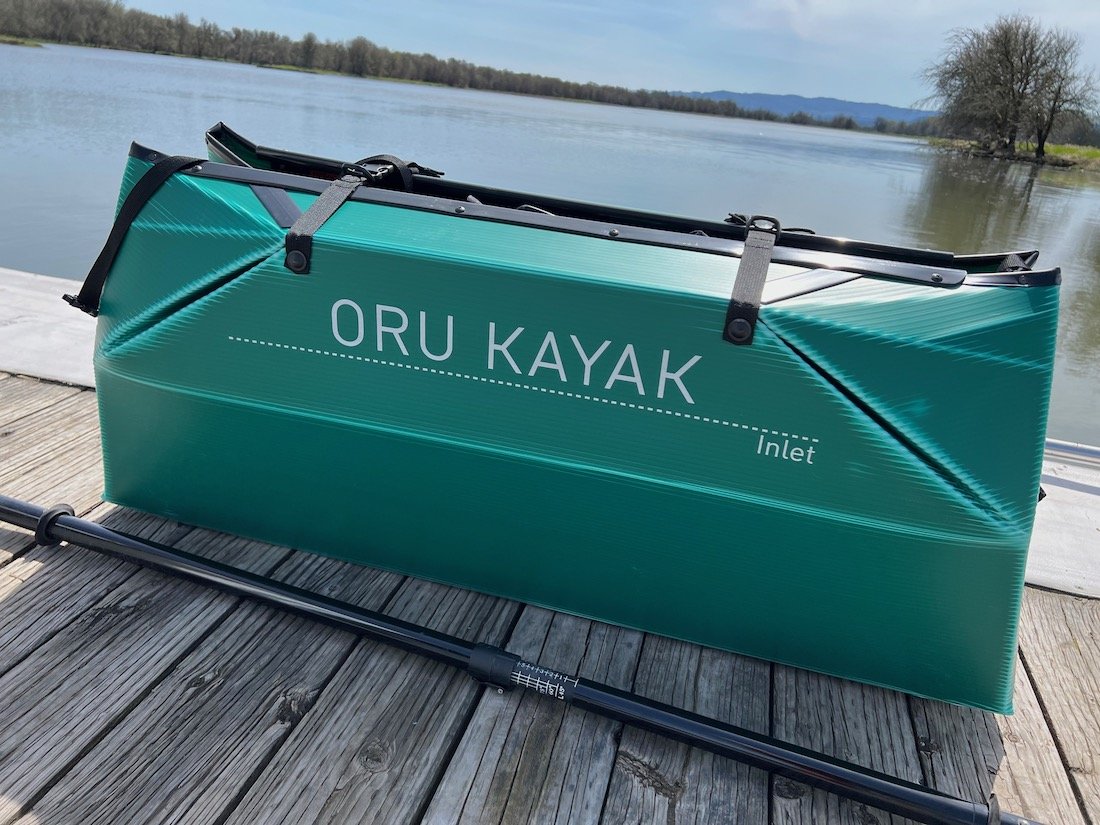


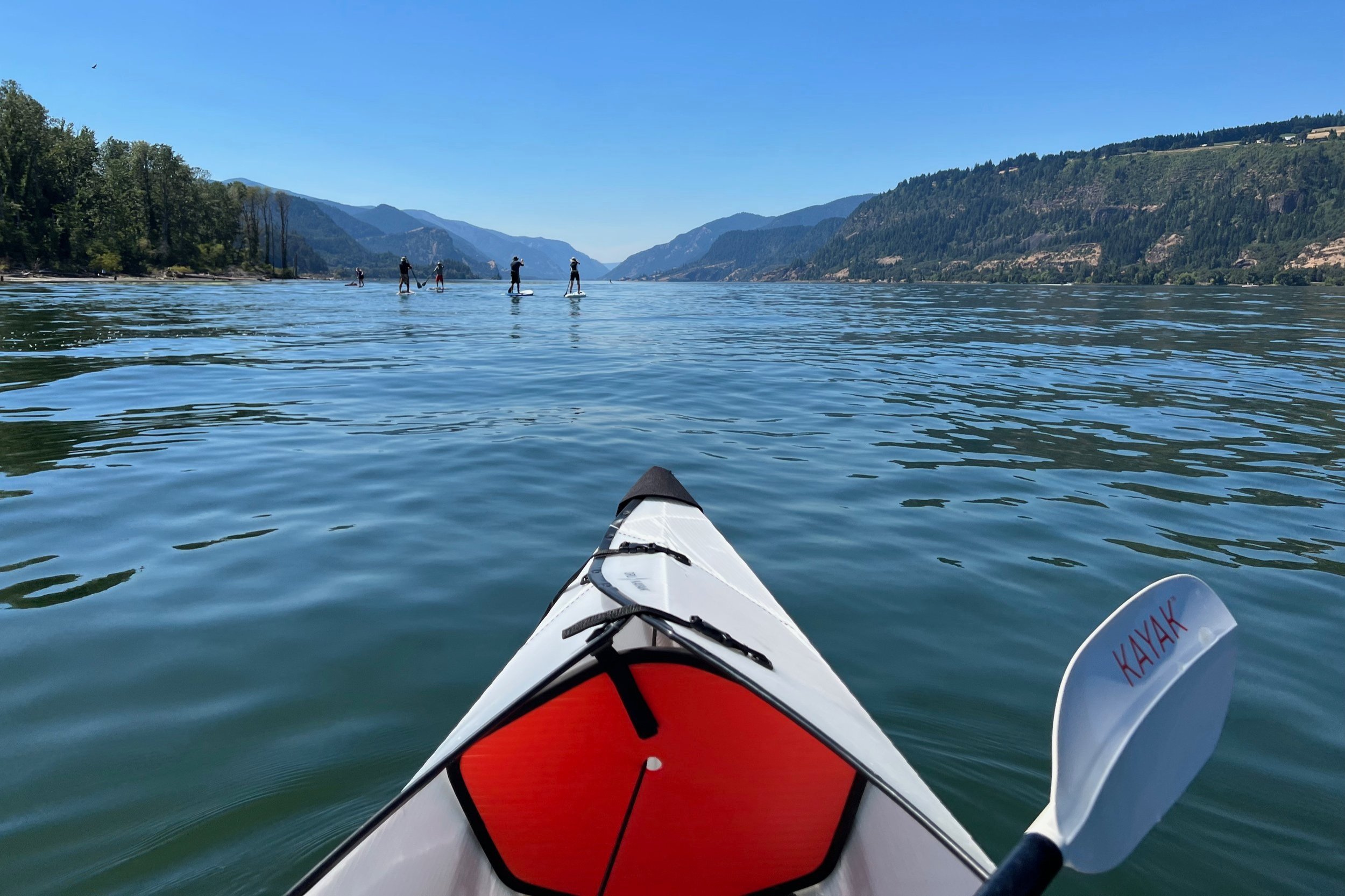


![Floating home cabin for rent [REVIEW]](https://images.squarespace-cdn.com/content/v1/62c5c6be9225615a8d0231a9/5288183e-d43e-418c-9fa1-095bc59b4e3f/FloatingHome-Rental-Oregon-OruInlet-Kayaking-FlatwaterKayakClub.jpeg)
Paddling across the glacier-clear waters of Eastern Oregon in a clear-bottom kayak under a sky full of stars is an unforgettable adventure.